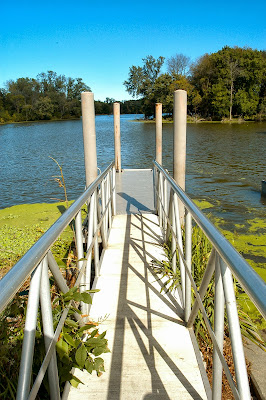What will the future of energy be? Geo-thermal? Wind? Solar? Or business as usual -- coal, gas, and nuclear? Go Green Northbrook doesn't have the answers, but to educate ourselves and provide options for our community to consider, we are asking the questions. Starting with solar.
Has solar heat been getting a bad rap all these years? Has its time finally come? Go Green Northbrook presents a compelling evening, guaranteed to get people talking. Join us at 7:00 PM in the Northbrook Library Auditorium on November 21, 2013, to hear about Energy Conservation and Solar Generation for Homes, Schools, & Buildings.
Before deciding whether solar may be right for you, there are every day energy conservation measures [ECMs] you can put into place. Begin with a home energy audit. Did you know that your smartphone probably has an app for that? You'll discover there are simple, cost effective, inexpensive changes you can make to your windows, water consumption, insulation, and lighting, to name just four.
Learn how solar has become an energy resource that's starting to make an impact in our community. Hear how energy costs have been reduced at the Glenbrook High Schools, in Northbrook homes, and for businesses around the Chicago area. Our featured speakers include Glenbrook North AP Environmental Sciences educator, Bud Mathieu, and Brandon Leavitt, president of Solar Service, Inc.
Glenbrook North High School estimates that they have saved more than $1 million, since the 2008-09 school year, through energy conservation techniques. The good news is that significant energy savings can be made at any school, large building, and even residential homes using similar techniques. GBN began a serious energy conservation program three years ago involving staff, students, and an energy consulting firm, funded by the Illinois Department of Commerce & Economic Opportunity. Students investigated and recommended improvements to the timing of lights in empty classrooms, window insulation seals, and drinking water conservation. The consultant identified improvements, including the adjustment of thermostat settings, synchronized by season and room use, with motion sensor control of lighting. These improvements cost $38,500 and have yielded annual savings of $75,000.
Brandon Leavitt is a nationally renowned pubic speaker on the advantages of a clean energy economy. He will discuss practical and affordable solar energy solutions for homeowners, businesses, municipalities, and schools. His firm installed the solar pool heating system at Glenbrook South High School as well as many residential solar energy systems in Northbrook and other communities. Solar Service's first installation in Northbrook was 30 years ago. The most recent was a 7.7kW solar electric installation turned on last month.
Northbrook residents, John and Merilee Novinson, have installed solar panels on their house. To show the panels on the roof [below], we had to take the picture from the other side of the street, because they are practically invisible.
According to the Novinsons, their electrical bills run about 30% lower with the solar panels, even after adding heating to the master bath floor and a dumb waiter.
Before deciding on solar panels, they suggest doing a thorough evaluation of your current electrical use in comparison with optimized internal power usage. If a 25% - 30% decrease can be made through internal replacements, better construction, maybe panels can wait. But if it still seems like the best idea, here are things to consider when considering your choice of providers:
• Get at least three references for each company
• Check references thoroughly and consistently
• Find out how long they have been in business
• Get a detailed, written proposal
• Make sure the proposal includes all possible tax and/or grant benefits for the homeowner
• Get a commitment in all bids that the installer will do all necessary paperwork for you, regarding tax and grants [ours did a very good job with this]
• Find out about warranties
• Determine whether materials used are local/sustainable
• Learn how many kilowatts you use in comparison with what you could produce with solar
• Make sure you have the right location for the best energy production
John is the former Village Manager for Northbrook. Merilee is a member of the Go Green Northbrook Steering Committee and the Go Green Northbrook Communications Team.



























































